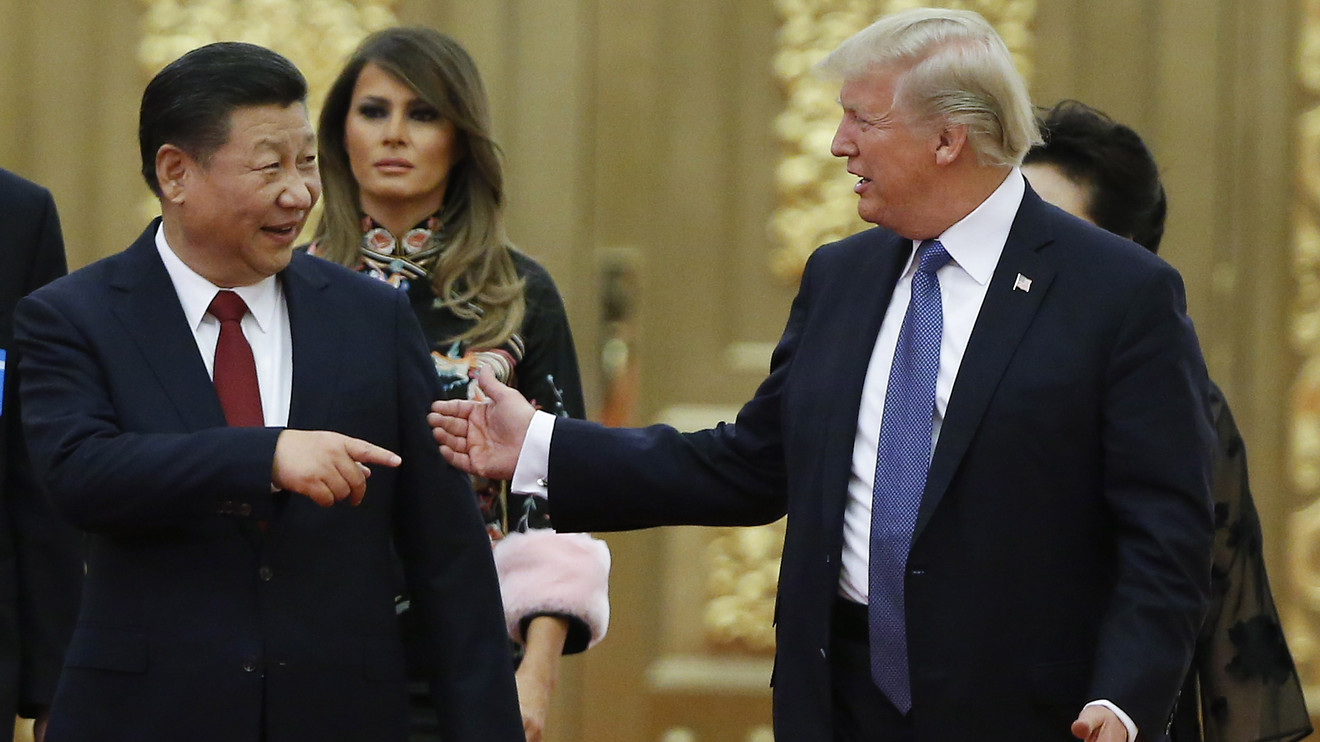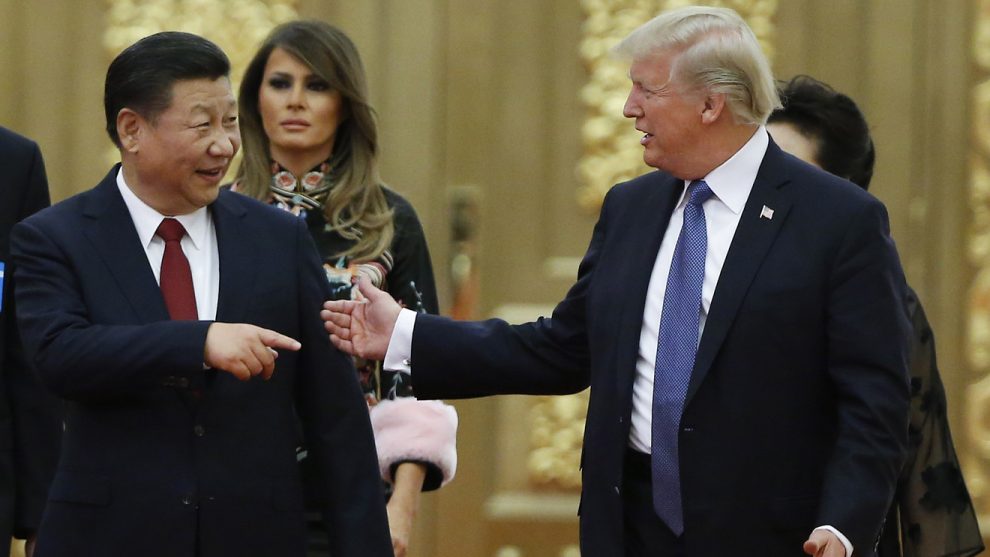
Add investing to the list of things that are all about politics these days.
That seems to be the lesson for investors in stocks and other financial markets as they gear up for summer against a backdrop of tensions over trade policy and other potential geopolitical flare-ups that, in turn, appear to be driving economic policy-making decisions around much of the world.
Political considerations “are more of a factor today than normal,” said Mark Haefele, global chief investment officer at UBS Wealth Management, which oversees $2.3 trillion in invested assets, in an interview.
Some clients are pulling back on investments in their own businesses due to political uncertainties despite being optimistic about the future — a phenomenon that could begin to have an effect on the economy if it continues, he said. Meanwhile, President Donald Trump’s threat of tariffs that could have risen as high as 25% on all Mexican imports — a threat that Trump “indefinitely suspended” Friday night — would have potentially been a “big deal” for the U.S. economy.
The trade fight isn’t the only external risk on the radar. Italy appears headed for a budget showdown with the European Union that could yet shake faith in the durability of the eurozone. The Brexit process is a mess amid a battle to succeed outgoing Prime Minister Theresa May as a twice-delayed deadline for the U.K.’s departure looms on June 30. And U.S. House Democrats haven’t ruled out pursuing Trump’s impeachment.
“All market forecasts these days depend critically on politics,” said Christoph Rieger, head of rates and credit research at Commerzbank in Frankfurt, in a note.
‘Act as appropriate’
Look back to Tuesday, when Federal Reserve Chairman Jerome Powell sparked a stock-market rebound by taking note of uncertainties surrounding the Trump administration’s trade battles with China and Mexico and declaring the central bank would “act as appropriate” to safeguard an economic expansion that’s hit its one-decade anniversary.
Related: Fed signals it will use quantitative easing aggressively to fight next recession
Also see: Not so fast — interest-rate cuts aren’t a done deal, experts at Fed conference say
Indeed, Powell’s current stance contrasts with the Fed’s position amid the market carnage that sank the S&P 500 index to within a whisker of a bear market last December, noted Hans Mikkelsen, rates strategist at Bank of America Merrill Lynch.
“Presently the Fed has identified a clear external risk to policy objectives — namely a trade war — and of course will cut rates as necessary,” he said, in a note earlier this week. “Back in 4Q18 instead the Fed was the problem, as they engaged in a disorderly rate hiking cycle, but seemingly failed to acknowledge that until equities had declined about 20%.”
Then there was the European Central Bank, which on Thursday surprised investors by announcing it planned to leave rates on hold through at least the first half of 2020, compared with an earlier pledge to maintain its current low rates through the end of 2019. In explaining the move, ECB President Mario Draghi emphasized the ”prolonged presence of uncertainties” tied to “geopolitical factors, the rising threat of protectionism and vulnerabilities in emerging markets” that were weighing on economic sentiment.
Read: Draghi says ECB willing to cut rates, make other moves if conditions deteriorate
“It’s official — trade concerns have crossed the bar of the Governing Council consensus,” wrote economist Lena Komileva of G+ Economics, on Twitter. “Political risk has become the main driver of the international monetary cycle as Q2 draws to a close.”
‘Bad news’ is ‘good news’
Investors certainly appear to be banking on policy makers’ ability to save the day. After ending their worst May since 2010, stocks put in their strongest week since November, capped by a Friday rally that saw the Dow Jones Industrial Average DJIA, +1.02% advance 263.28 points, or 1%, to close at 25,983.94, while the S&P 500 SPX, +1.05% gained 1.1% to end at 2,873.34.
Analysts said it was a return to the bad-news-is-good-news dynamic, at least for the stock market, with investors looking for interest rate cuts to preserve a Goldilocks environment while averting recession. Of course, trade policy was also part of the mix on Friday, with Trump tweeting that he saw a “good chance” of a deal with Mexico earlier in the day. That also helped lift stocks, analysts said.
But bond investors appear more glum, pricing in an aggressive interest rate-cut strategy that implies they see a recession on the horizon, Haefele said.
Indeed, Commerzbank’s Rieger forecast the yield on the benchmark 10-year U.S. Treasury TMUBMUSD10Y, +0.00% could drop to a record low of 1.25% by year-end, based on expectations the Fed will prove even more aggressive than investors expect in an effort to pre-empt a recession.
For his part, Haefele and his UBS colleagues think a recession remains unlikely and that the bond market moves have been excessive. After moving last month to reduce risk exposure in their tactical asset allocation, they moved earlier this week to underweight U.S. government bonds versus cash. They also moved to overweight U.S. stocks versus other developed-market equities, arguing that U.S. equities are better positioned than eurozone stocks, in particular, to perform in an environment of heightened risk and growth uncertainty. They noted eurozone stocks have outperformed the U.S. year to date, but argued that European companies are likely to disappoint on earnings growth and could face additional regional political headwinds of their own.
Here to stay?
These political drivers might not be a passing phenomenon.
“The recent political developments may well point the way for the coming years, if not decades,” Rieger said.
The U.S.-China battle appears to have moved beyond a fight over trade balances, revealing a deeper conflict over technology policy and broader economic and political concerns.
“It is no longer just about reducing perceived imbalances via import tariffs. Both sides are also in the process of restricting specific exports and are thus willing to incur economic costs to achieve political goals in the race for the global leadership in the 21st century,” Rieger said.
On that cheery note, investors can look to an economic calendar that in the week ahead will feature the latest readings on inflation and the willingness of consumers to open their wallets. The May producer-price index is due for release Tuesday, with the consumer-price index set for Wednesday. On Friday, May retail sales figures are due.











Add Comment